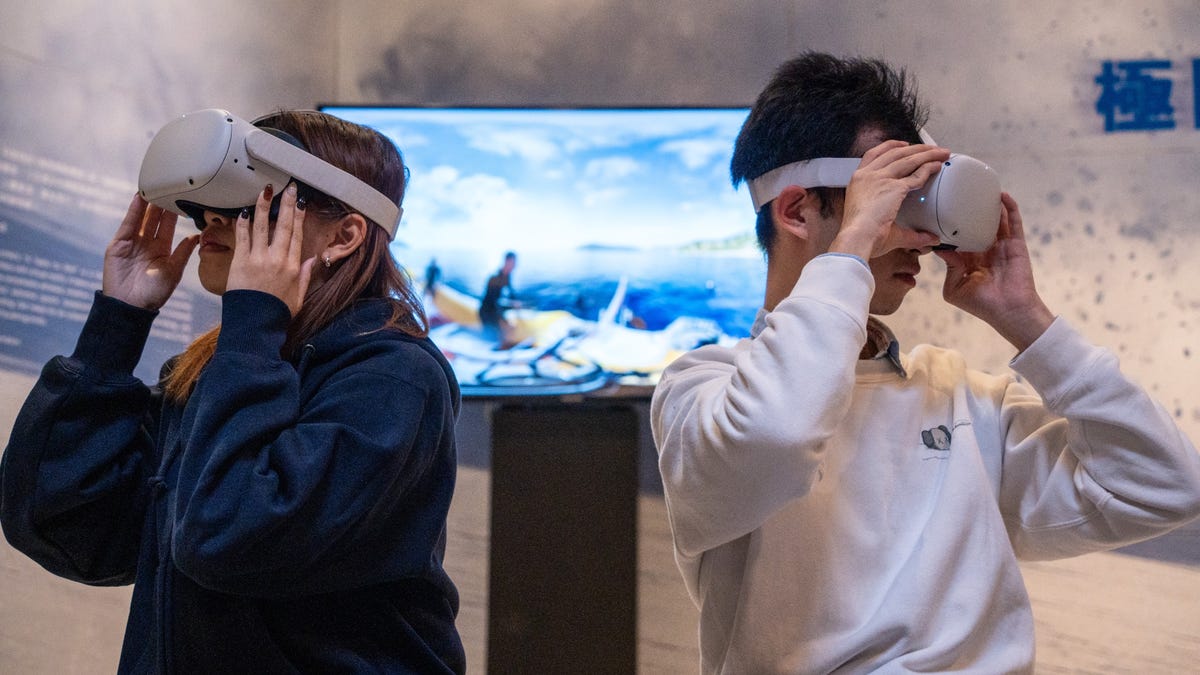Qualcomm, Samsung, and Google announced their partnership to build an XR headset at the Unpacked event in Feb. 2023.
Screenshot by ZDNET
According to new reports from Upload VR and the Korean newspaper The JoonAng, the XR alliance formed by Samsung, Google, and Qualcomm to build a mixed reality headset has hit the reset button on their project and delayed the launch.
The JoonAng reports that Samsung has now commissioned higher resolution screens from Samsung Display for its XR headset to match the surprising 4K-in-each-eye (8K) displays — made by Sony — that Apple unveiled in the Vision Pro. That has contributed to delaying the announcement of the Samsung headset from early 2024 to mid-2024 and pushed the headset product launch to the end of the year.
Separately, Upload VR reported that Samsung has also communicated to developers that its new headset will now launch at the end of 2024.
The JoonAng’s sources also claim that the production target for the Samsung headset will be a modest 30,000 units for 2024. By comparison, Apple’s production targets have reportedly also been scaled back from 1 million to 400,000 units of the Vision Pro for 2024. The price of the Samsung headset is reportedly expected to be around $2,000, which compares to $3,500 for the Apple Vision Pro and $500 for the Meta Quest 3 that just launched in October.
Also: I tried Apple Vision Pro and it’s far ahead of where I expected
This information joins multiple reports that have surfaced since this summer that Samsung, Google, and Qualcomm decided to go back to the drawing board after Apple announced the Vision Pro at WWDC in June with high-end specs that surprised the industry. However, as late as the Unpacked event in July, Samsung talked about its headset announcement being “not too far off.”
Samsung is designing the hardware for the joint venture XR headset, while Google is developing a mixed reality version of Android, and Qualcomm is supplying the underlying chip technology — most likely the Snapdragon XR2 Gen 2 Platform, which powers the Meta Quest 3 headset.
At CES 2023, I tested the HTC Vive XR Elite, which is powered by Qualcomm’s Snapdragon XR2 chip.
June Wan/ZDNet
Also: Meta’s $500 Quest 3 is the mainstream VR headset I’ve been waiting for, and it delivers
This kind of reset is reminiscent of the birth of Android, when Google was designing its smartphone platform to be a BlackBerry-like system until it saw Apple’s iPhone announcement and then started over. Instead, it turned Android into a much more iPhone-like multitouch interface and Samsung quickly became Android’s leading proponent and top-selling hardware maker.
If this this reportedly leaked prototype of the headset — clearly designed in the mold of the early Oculus Quest and HTC Vive headsets — was real, then it’s a positive move the trio is rebooting their plans. I expect Samsung to design a much more compelling hardware product by the time we finally get a look at its next-generation headset in mid-2024 — possibly at the summer Unpacked event where it typically unveils its latest foldable phones.
